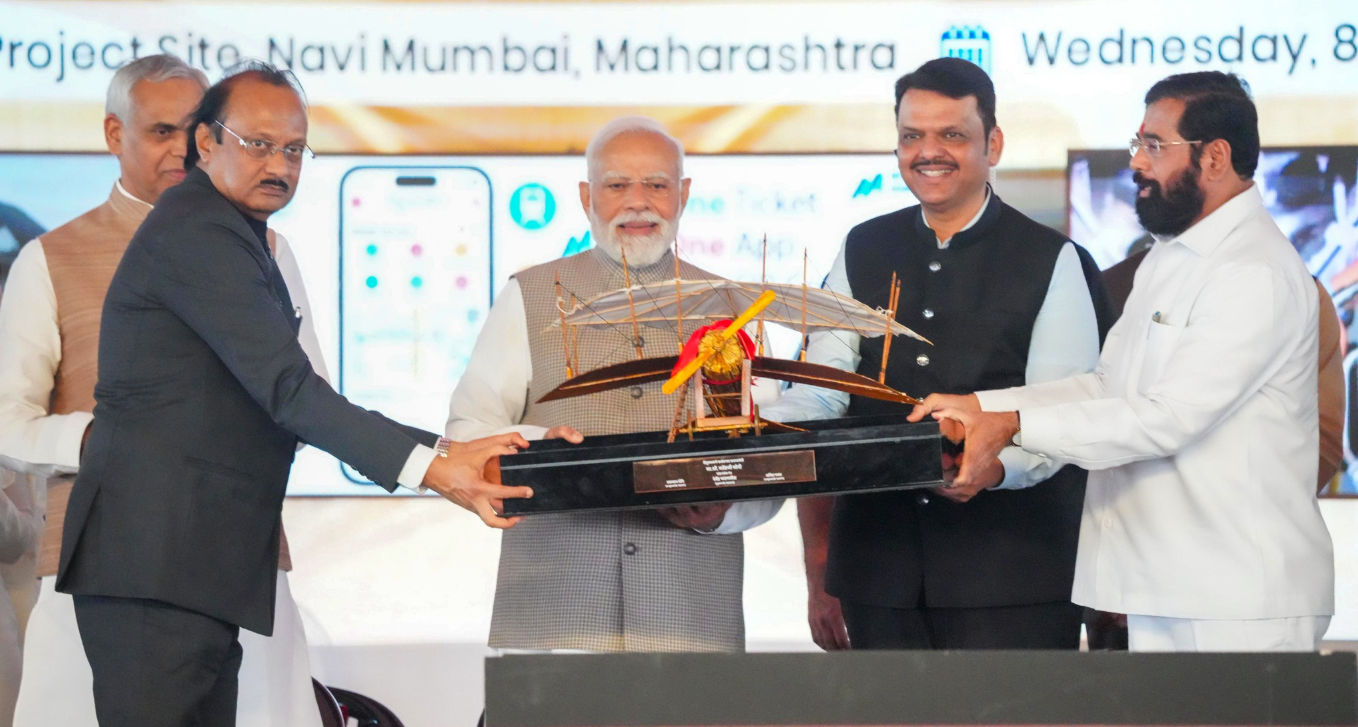 Prime Minister Modi Inaugurates Navi Mumbai International Airport: A New Dawn for Indian Aviation
Prime Minister Modi Inaugurates Navi Mumbai International Airport: A New Dawn for Indian Aviation
On October 7, 2025, Prime Minister Narendra Modi officially inaugurated the much-anticipated Navi Mumbai International Airport (NMIA), a landmark infrastructure project poised to transform India’s aviation landscape and ease the immense pressure on Mumbai’s existing airport system. Built at a staggering cost of approximately US$2.2 billion (₹19,650 crore), this massive greenfield airport project embodies India’s ambitions to become a leading global aviation hub.
Project Overview and Significance
Navi Mumbai International Airport, spread over 1,160 hectares in Ulwe, Navi Mumbai, is India’s largest greenfield airport, developed under a public-private partnership (PPP) model between the Maharashtra government’s City and Industrial Development Corporation (CIDCO) and the Adani Group, which holds a 74% stake. The airport is designed to handle 90 million passengers annually upon full completion, more than doubling the capacity of the existing Chhatrapati Shivaji Maharaj International Airport (CSMIA).
The new airport will operate alongside Mumbai’s existing international airport to lower congestion and increase Mumbai’s status as a multi-airport global city, similar to other major international hubs like London, New York, and Tokyo. The first phase, inaugurated by PM Modi, comprises one terminal and a single 3,700-meter runway, capable of accommodating 20 million passengers annually, with domestic and international flights expected to commence operations starting December 2025.
Architectural and Technological Innovations
Navi Mumbai International Airport is notable for its modern, passenger-friendly design inspired by the lotus flower, symbolizing culture and prosperity. The terminal building features 66 check-in counters, 29 aerobridges, 22 self-baggage drop counters, and 10 bus boarding gates, offering an efficient and high-comfort travel experience. The airport also stands out with India’s first fully digital systems for various passenger operations, including online vehicle parking booking and automated baggage handling.
Among the airport’s cutting-edge features is an Automated People Mover (APM) transit system planned to connect all four eventual terminals via underground tunnels, facilitating seamless inter-terminal transfers while enhancing passenger convenience. The airport will also boast sustainable infrastructure such as a 47 MW solar power installation and dedicated storage for Sustainable Aviation Fuel (SAF), as well as electric vehicle buses for city connectivity. Unique to India, NMIA will be the first airport connected by water taxi services, enhancing multi-modal transportation options for travelers.
Economic and Strategic Impact
PM Modi emphasized the airport’s strategic importance, noting it as “Asia’s largest connectivity hub” that will catalyze economic growth in Maharashtra and beyond. The facility is expected to attract significant foreign and domestic investment, create employment opportunities for more than 100,000 people by 2036, and boost India’s exports by facilitating cargo movement with its state-of-the-art facilities capable of handling 3.25 million metric tonnes annually.
The airport is projected to substantially support regional development, connecting farmers and businesses in Maharashtra to markets across the Middle East and Europe. This aligns with broader government initiatives like the UDAN scheme, which has democratized air travel in India, making flying affordable and accessible to millions for the first time.
Future Expansion and Connectivity
The ongoing development plan for NMIA includes constructing three additional terminals and a dedicated VVIP terminal by 2030. The airport will ramp up its capacity to 90 million passengers annually as new phases are completed. Multi-modal connectivity will be enhanced through metro line extensions connecting to Mumbai’s existing transit systems, improved road infrastructure including the Atal Setu bridge, and waterway transport via water taxis from nearby locations.
The integration of these transportation modes reflects Maharashtra’s vision to ensure seamless connectivity, making NMIA accessible and convenient for passengers from across the Mumbai Metropolitan Region and neighboring states.
National Vision and Aviation Leadership
With NMIA joining India’s rapidly expanding network of airports, the country solidifies its position on the global aviation map. The NDA government, under PM Modi’s leadership, has overseen the construction of 90 new airports over the past decade, setting a global record for airport development rates. The inauguration of NMIA epitomizes this transformative journey toward a modern, efficient, and sustainable aviation ecosystem.
Conclusion
Navi Mumbai International Airport represents a defining moment for India’s aviation sector and Maharashtra’s infrastructure development. It is a symbol of India’s growth ambitions, cutting-edge technology adoption, and commitment to sustainable development. As commercial flights are set to begin in December 2025, NMIA will play a pivotal role in making Mumbai a top-tier global aviation hub, driving socio-economic progress and enhancing international connectivity for years to come.
